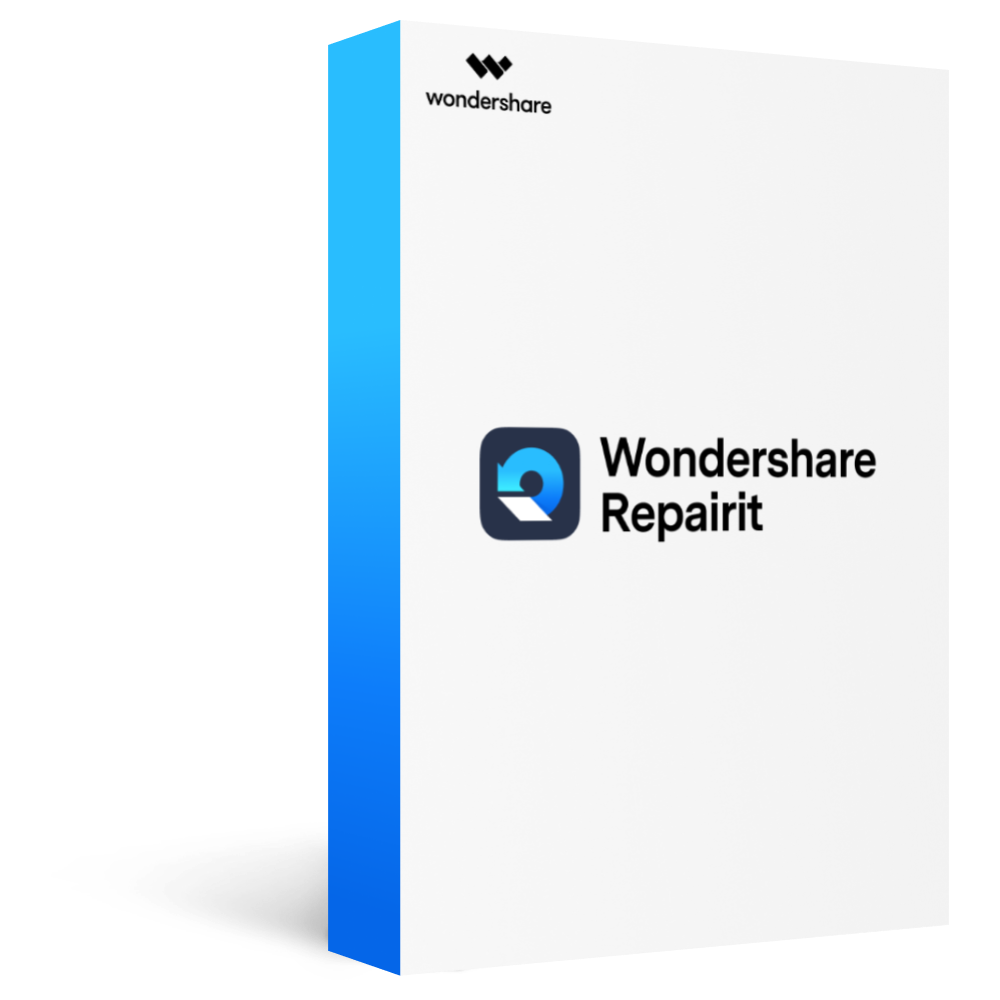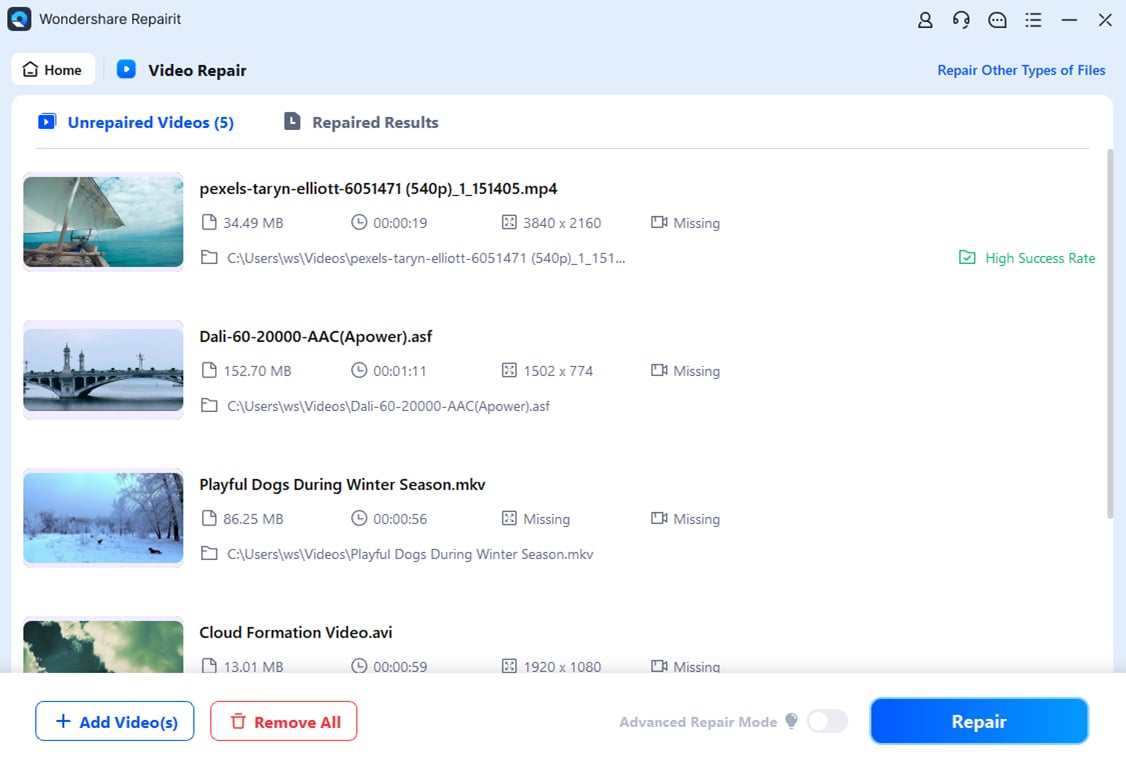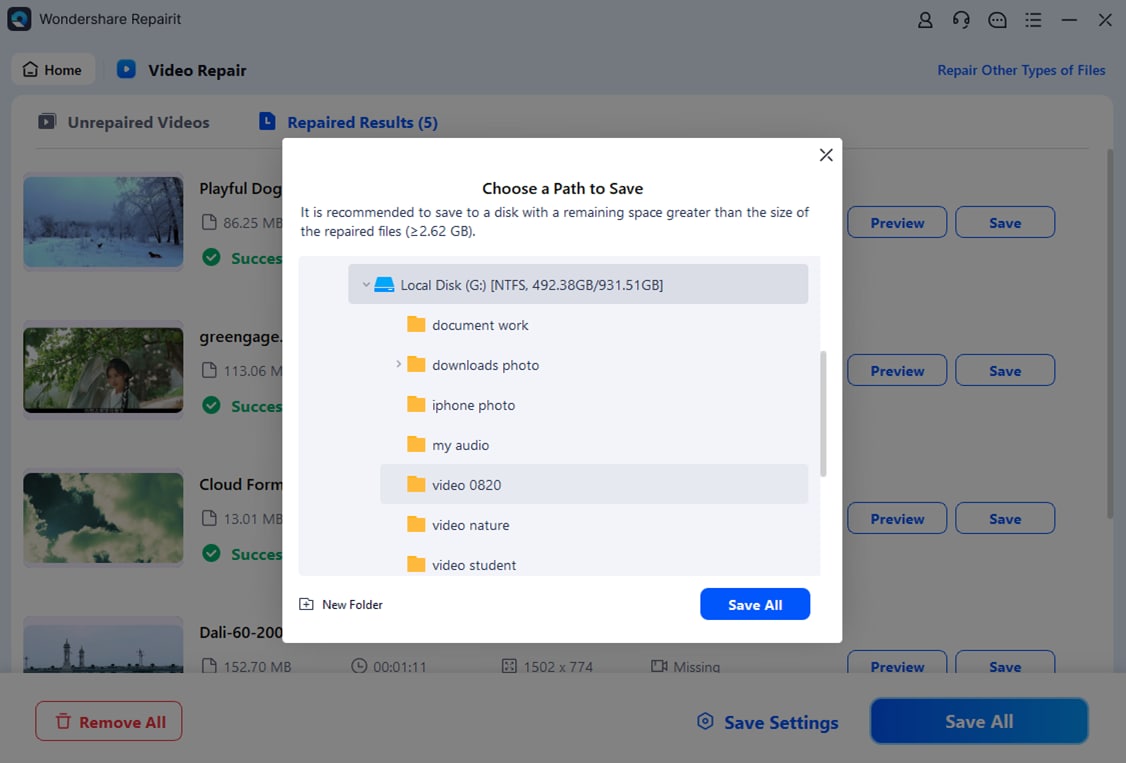Whether you’re a filmmaker, gamer, or content creator, the question of frame rate — 24fps vs 30fps vs 60fps — is key to how your content looks and feels. From cinematic drama to smooth action, each frame rate serves a different purpose. In this guide, we’ll explore what each FPS means, its ideal use cases, and which one you should pick.
In this article
Part 1: What Does FPS Mean in Video and Gaming?
Before comparing 24fps, 30fps, and 60fps, you need to understand what FPS means. FPS stands for "frames per second," which refers to how many individual images (or frames) are shown every second in a video or game. The higher the number, the smoother the perceived motion.
Why FPS Matters
Frame rate determines how natural or jittery movement appears. For example:
- A low FPS (like 15 or 20) often looks choppy or laggy.
- A higher FPS (like 60 or above) provides smoother transitions and cleaner motion.
In video production, FPS influences the storytelling style. In gaming, it impacts both aesthetics and performance.
Standard Frame Rates Across Industries
Each industry has its own FPS norms:
- Cinema: Traditionally uses 24fps because it mimics the motion blur that the human eye expects.
- TV and Broadcast: Typically runs at 30fps in North America due to historical compatibility with electric current frequency (NTSC system).
- Gaming: Often goes for 60fps or more, especially for competitive and fast-paced titles.
Understanding these standards helps you make better choices when you're creating or consuming visual content.
What About Bitrate and Storage?
The more frames you capture per second, the more data you generate. That means:
- 24fps requires less storage and is easier to process
- 30fps is moderately demanding
- 60fps can double your storage needs and slow down editing or rendering workflows
So, when you’re choosing a frame rate, consider both your device capabilities and your workflow needs.
Motion Blur: An Important Aesthetic Factor
Motion blur refers to how movement is captured during the time each frame is recorded. At 24fps, blur is more noticeable and gives a filmic softness. At 60fps, motion blur is reduced, which makes everything sharper—sometimes too sharp for drama, but perfect for sports or fast movement.
1: What Is 24fps – The Cinematic Standard
When it comes to cinematic storytelling, 24fps is the undisputed champion. It's been the industry standard for motion pictures since the early 20th century, and it continues to dominate today’s filmmaking landscape. But why 24 frames per second? What makes it so iconic?
Why 24fps Looks “Filmic”
At 24fps, fewer images are captured per second, resulting in more natural motion blur. This visual softness is what your brain associates with traditional cinema. The slightly stuttered motion adds a dreamlike quality that enhances dramatic storytelling.
Ideal Use Cases for 24fps
You should use 24fps when you're prioritizing emotion, mood, and a cinematic feel. It’s perfect for:
- Narrative films
- YouTube vlogs or skits
- Documentaries
- Weddings and music videos
- Artistic or story-driven content
If your project tells a story or aims to evoke deep emotion, 24fps is a solid pick.
When Not to Use 24fps
- Avoid 24fps if your footage requires real-time clarity or visual sharpness. For example, product reviews, educational tutorials, and anything that involves quick gestures or movement might look better in a higher frame rate.
2: What Is 30fps – The Broadcast-Friendly Frame Rate
30fps is a popular choice for content creators and broadcasters who want a smooth, professional look without sacrificing too much storage or processing power. It’s widely used across U.S. television, online streaming, and social media platforms.
Why 30fps Became Standard for Broadcast?
The use of 30fps ties back to the NTSC video standard used in North America. It matched the frequency of electricity (60Hz), resulting in a frame rate of approximately 29.97fps. For modern digital video, this rounds up to 30fps.
Best Use Cases for 30fps
You should use 30fps if you’re producing:
- News reports or interviews
- Corporate presentations
- Online courses and how-to videos
- Social media content (Facebook, Instagram Reels)
- General YouTube uploads
If your footage features steady movement and clear visuals, 30fps is an excellent option.
When to Avoid 30fps?
- Avoid 30fps if you’re creating footage that requires extreme clarity or detailed slow-motion playback. It’s also less suitable for traditional film projects where the goal is to preserve a classic visual tone.
3: What Is 60fps – Ultra Smooth Motion
When you want silky-smooth motion and responsive playback, 60fps is your best option. This frame rate captures twice as many frames per second as 30fps, resulting in crisp visuals and a more lifelike experience. It's widely used in gaming, action videos, and sports content.
The Rise of 60fps in Gaming and Online Video
Most AAA games and competitive esports titles target 60fps or higher. Platforms like YouTube and Twitch also support 60fps uploads, making it easier for creators to showcase high-quality gameplay, tutorials, or tech reviews without sacrificing smoothness.
In addition to games, many modern smartphones now offer 60fps recording by default. It's also becoming standard in camera settings for creators who want the flexibility of smooth motion or the ability to convert to slow motion later in editing.
Use Cases Where 60fps Shines.
You should use 60fps if you're producing:
- First-person shooters (FPS) or racing games
- Sports highlight reels
- Slow-motion replays
- Screen capture tutorials
- Fitness or choreography content with fast motion
When to Avoid 60fps
- Avoid 60fps if you're aiming for a cinematic tone or emotional storytelling. Also, if you're working with limited storage space or older editing software, 60fps may slow down your workflow.
Part 2: 24fps vs 30fps vs 60fps – Key Differences
Now that you understand each frame rate individually, let’s compare them side-by-side. Choosing between 24fps, 30fps, and 60fps depends on what you're creating, where you'll share it, and how much processing power you're working with.
| Feature | 24fps | 30fps | 60fps |
|---|---|---|---|
| Look | Cinematic | Realistic | Hyper-real/smooth |
| Best For | Film | YouTube, TV | Gaming, Sports |
| File Size | Low | Medium | High |
| Editing Flexibility | Low | Medium | High |
| Hardware Demand | Low | Medium | High |
Part 3: Which Frame Rate Should You Use?
Choosing the right frame rate can dramatically change how your video or game feels to the viewer. Now that you've seen what 24fps, 30fps, and 60fps each bring to the table, it’s time to decide which one to use—and when.
Choose 24fps for Cinematic and Dramatic Content.
If you're creating short films, documentaries, cinematic vlogs, or anything intended to feel emotional and immersive, 24fps is a perfect fit. It delivers the “film look” most people associate with professional storytelling.
- Select 24fps in your camera settings.
- Use natural lighting and slower movements to enhance the cinematic effect.
- Avoid fast pans or quick motion, which may cause stuttering in 24fps.
It’s best used when storytelling takes priority over clarity and motion. The slower frame rate adds subtle motion blur that viewers subconsciously associate with traditional film.
Choose 30fps for Casual or Professional Content.
Creating a YouTube video? Filming a tutorial or business presentation? Posting content to Facebook or Instagram? 30fps is your go-to.
- Set your camera or software to 30fps.
- Record under good lighting for clean visuals.
- Use transitions and pacing that feel natural and informative.
This frame rate offers a happy medium—less jitter than 24fps, without the hyper-smoothness of 60fps. It’s ideal for interviews, educational content, and everyday social media videos.
Choose 60fps for Action, Gaming, or Tech.
If your content includes a lot of movement—think gaming footage, sports, dance tutorials, or tech reviews—60fps is the way to go.
- Set your camera, phone, or recording software to 60fps.
- Make sure your lighting and hardware can support higher bitrates.
- Edit using software that supports high frame rate playback.
The extra frames allow for more detailed analysis of movement, reduced motion blur, and high-quality slow-motion edits.
Audience and Platform Considerations
Think about where your content will be shared:
- YouTube supports 24fps, 30fps, and 60fps
- Instagram and Facebook default to 30fps
- Film festivals prefer 24fps
- Twitch and gaming platforms favor 60fps
If you’re aiming for cross-platform reach, 30fps is the safest bet.
Hardware and File Management
Don’t forget your system’s limits. Higher frame rates require more processing power, faster memory cards, and larger hard drives. If you're on limited resources, stick to 30fps or 24fps to avoid bottlenecks in editing and exporting.
Part 4: Got Blurry, Low FPS videos/Images? Repair to the Rescue!
Sometimes, even when you pick the “right” frame rate, things don’t go as planned. Your video might come out blurry, stuttery, or choppy, especially when recorded at low FPS, like 24fps or 30fps. This is common in low light, on budget hardware, or during faulty exports. That’s where Repairit comes in.
Why Use Repairit?

-
Repair damaged videos with all levels of corruption, such as video not playing, video no sound, out-of-sync video or audio, playback errors, header corruption, flickering video, missing video codec, etc.
-
Repair full HD, 4K, and 8K videos and support 20+ popular formats, including MOV, MP4, M2TS, MDT, RSV, WMV, MPEG, DAT, etc.
-
Repair damaged or corrupted videos caused by video compression, system crashes, video format changes, etc.
-
Repair critically damaged or corrupted RAW/LOG/HDR videos from professional cameras such as Blackmagic Design, RED Digital, ARRI, etc.
-
Repairit has a quick and advanced scanning mode. You can use either depending on the level of corruption the video file has undergone.
-
No limit to the number and size of the repairable videos.
-
Repaired videos are more compatible with professional editing software such as DaVinci, Composer, Final Cut Pro, and Premiere Pro.
-
Support Windows 11/10/8/7/Vista, Windows Server 2003/2008/2012/2016/2019/2022, and macOS 10.12~macOS 15.
How to Use Repairit to Fix FPS Issues:
Step 1: Reach the software, Click “Video Repair” and upload the blurry, broken, or unplayable video file.

Step 2: Click Repair. If the file is severely damaged, select Advanced Repair and upload a similar, undamaged file.

Step 3: Wait for the repair process to complete, then preview and click Save.

Increase the FPS of Your Video Now

Conclusion
Here’s the deal: each frame rate brings a unique look and feel to your videos or games. 24fps offers that timeless cinematic quality. 30fps delivers a realistic and balanced experience for general-purpose content. And 60fps is your go-to when you want ultra-smooth motion and fine detail.
But here’s the kicker: even if you shoot in the ideal FPS, poor lighting, bad encoding, or playback glitches can ruin your final output. That’s where Repairit saves the day—restoring clarity, stability, and motion.
FAQs
-
1. Why do filmmakers still use 24fps?
It mimics the motion blur and pacing of traditional cinema, giving video that “movie-like” aesthetic. -
2. Is 60fps better than 30fps for YouTube?
Yes, especially for high-motion content like gaming, sports, or tech videos. But it depends on your audience. -
3. Does 60fps require more storage?
Definitely. More frames per second means larger files and higher bitrates.


 ChatGPT
ChatGPT
 Perplexity
Perplexity
 Google AI Mode
Google AI Mode
 Grok
Grok

